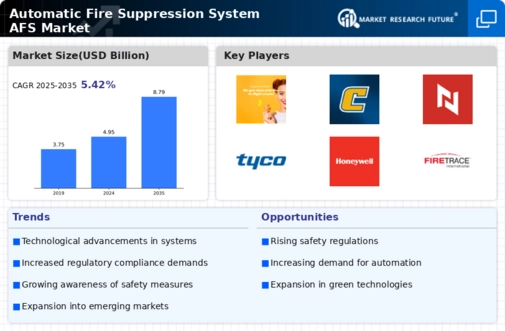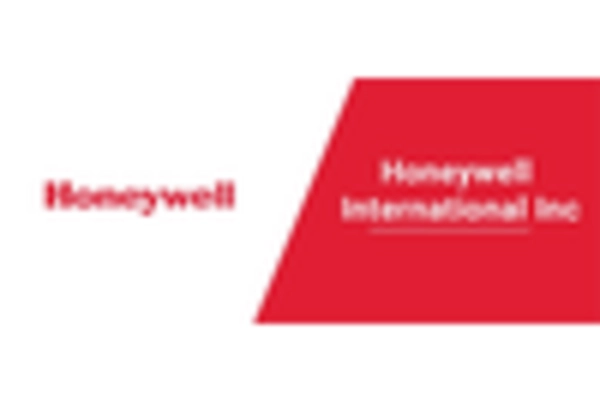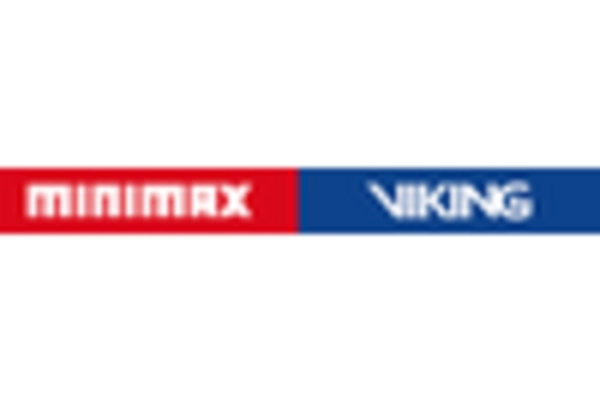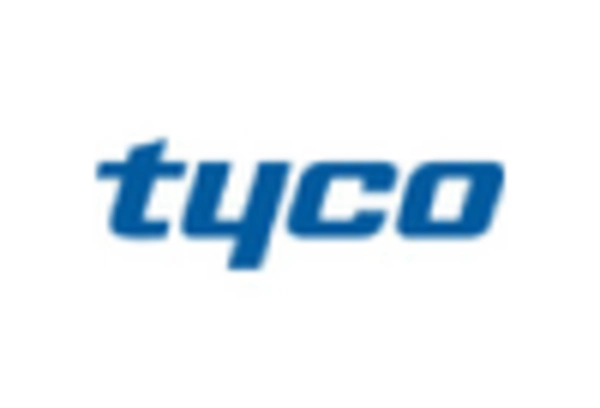Technological Innovations
Technological innovations in fire suppression systems are significantly influencing the Automatic Fire Suppression System AFS Market. The integration of smart technologies, such as IoT and AI, is enhancing the efficiency and effectiveness of fire suppression systems. These advancements allow for real-time monitoring and rapid response to fire incidents, which is crucial in minimizing damage. Furthermore, the development of environmentally friendly suppression agents is gaining traction, aligning with sustainability goals. As a result, the market is witnessing an influx of innovative products that cater to diverse applications, from industrial facilities to residential buildings, thereby expanding the overall market potential.
Growth in Construction Activities
The growth in construction activities across various sectors is contributing to the expansion of the Automatic Fire Suppression System AFS Market. As new buildings and infrastructure projects emerge, the demand for integrated fire safety solutions is increasing. Developers and contractors are recognizing the necessity of incorporating Automatic Fire Suppression Systems into their designs to enhance safety and comply with regulations. Recent statistics indicate that the construction industry is expected to grow by approximately 5% annually, which bodes well for the fire suppression market. This trend suggests that as more structures are built, the need for effective fire safety measures will continue to rise.
Increasing Awareness of Fire Safety
The rising awareness of fire safety among businesses and residential sectors appears to be a primary driver for the Automatic Fire Suppression System AFS Market. As incidents of fire-related disasters continue to garner media attention, organizations are increasingly prioritizing fire safety measures. This heightened awareness is leading to a surge in demand for advanced fire suppression systems. According to recent data, the market for fire safety equipment is projected to grow at a compound annual growth rate of approximately 7.5% over the next five years. This trend indicates that stakeholders are recognizing the importance of investing in Automatic Fire Suppression Systems to mitigate risks and protect lives.
Regulatory Frameworks and Compliance
The establishment of stringent regulatory frameworks and compliance requirements is driving the Automatic Fire Suppression System AFS Market. Governments and regulatory bodies are implementing laws that mandate the installation of fire suppression systems in various sectors, including commercial, industrial, and residential. This regulatory push is compelling organizations to invest in compliant fire safety solutions. For instance, the National Fire Protection Association (NFPA) has set forth guidelines that necessitate the use of Automatic Fire Suppression Systems in specific applications. Consequently, this regulatory environment is fostering a robust market for fire suppression technologies, as businesses seek to adhere to legal standards and ensure safety.
Focus on Sustainability and Environmental Impact
The growing focus on sustainability and environmental impact is shaping the Automatic Fire Suppression System AFS Market. Organizations are increasingly seeking fire suppression solutions that not only protect lives but also align with environmental standards. The development of eco-friendly suppression agents and systems that minimize water usage is becoming a priority. This shift towards sustainable practices is likely to attract environmentally conscious consumers and businesses. As a result, manufacturers are innovating to create products that meet these demands, thereby expanding their market reach. The emphasis on sustainability is expected to drive growth in the Automatic Fire Suppression System AFS Market as stakeholders prioritize eco-friendly solutions.


















Leave a Comment